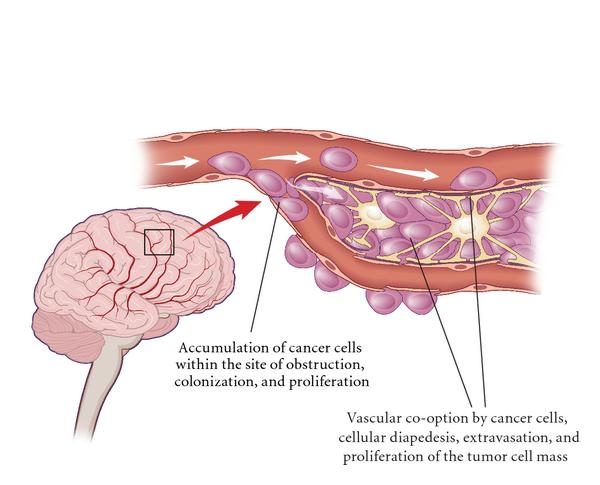File:Colonization of metastatic tumor cells in the brain.jpg
Colonization_of_metastatic_tumor_cells_in_the_brain.jpg (600 × 485 pixels, file size: 33 KB, MIME type: image/jpeg)
Overexpression of the adhesion molecules makes it easy for tumor cells to target and adhere to endothelial lining in the parenchyma, making it possible for these endothelial-adhesive interactions to enhance the possibility of brain metastasis. Direct neurotropic interactions with brain homing mechanisms result in brain metastases. “Vascular co-option” is the ability of metastatic cells to grow along the preexisting vessels, and once adherent to the vascular basement membrane, tumor cells can extravasate into the parenchyma, the vascular basement membrane thus being the “soil” for brain metastases.
File history
Click on a date/time to view the file as it appeared at that time.
| Date/Time | Thumbnail | Dimensions | User | Comment | |
|---|---|---|---|---|---|
| current | 22:40, 13 November 2015 |  | 600 × 485 (33 KB) | Sujit Routray (talk | contribs) | Overexpression of the adhesion molecules makes it easy for tumor cells to target and adhere to endothelial lining in the parenchyma, making it possible for these endothelial-adhesive interactions to enhance the possibility of brain metastasis. Direct n... |
| 22:39, 13 November 2015 |  | 600 × 485 (33 KB) | Sujit Routray (talk | contribs) | Overexpression of the adhesion molecules makes it easy for tumor cells to target and adhere to endothelial lining in the parenchyma, making it possible for these endothelial-adhesive interactions to enhance the possibility of brain metastasis. Direct n... |
You cannot overwrite this file.
File usage
The following page uses this file: